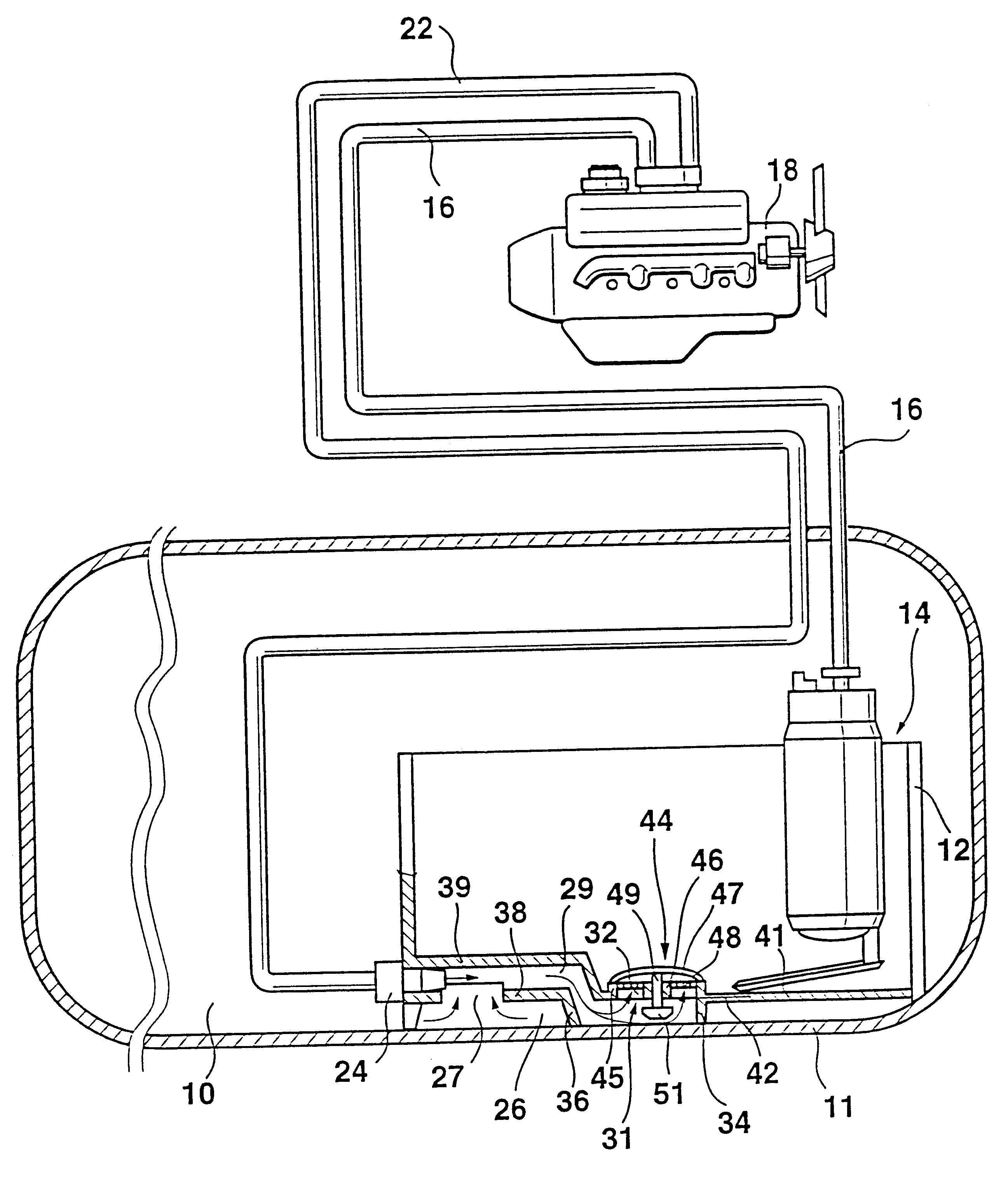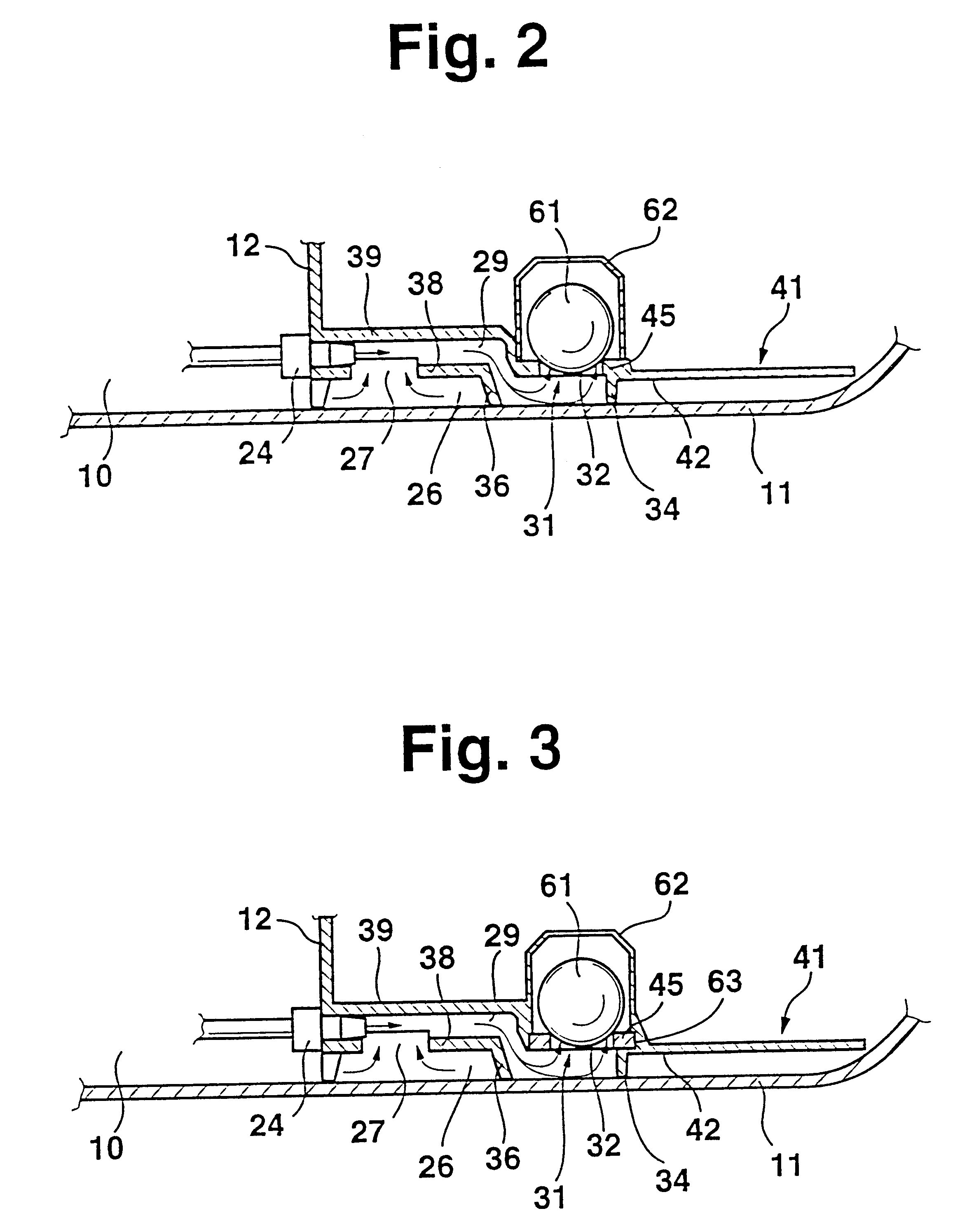Device for conveying fuel from a reserve pot to the internal combustion engine of a motor vehicle
- Summary
- Abstract
- Description
- Claims
- Application Information
AI Technical Summary
Benefits of technology
Problems solved by technology
Method used
Image
Examples
Embodiment Construction
A device shown in FIG. 1 for conveying fuel has a fuel tank 10 in whose interior a separate container-like reserve pot 12 is accommodated. The separate reserve pot 12 is embodied in potlike form, and a conveying unit 14, which includes an electrical drive motor and a pump portion accommodated in a common housing, is disposed in this reserve pot 12. The conveying unit 14 aspirates fuel from the reserve pot 12 and forces it via a supply line 16 to the internal combustion engine 18 of a motor vehicle, not shown in detail. A check valve can be accommodated in the supply line 16. Since the conveying unit 14 furnishes more fuel for the engine 18 than the engine can use, a return line 22 carries the excess fuel back into the tank 10. Located at the end of the return line 22 is a jet pump 24, which carries the return-flowing fuel into the reserve pot 12.
In the lower region of the reserve pot 12, near a tank bottom 11, a tank chamber 26 is provided which is open to the fuel tank 10. Via an o...
PUM
 Login to View More
Login to View More Abstract
Description
Claims
Application Information
 Login to View More
Login to View More - R&D
- Intellectual Property
- Life Sciences
- Materials
- Tech Scout
- Unparalleled Data Quality
- Higher Quality Content
- 60% Fewer Hallucinations
Browse by: Latest US Patents, China's latest patents, Technical Efficacy Thesaurus, Application Domain, Technology Topic, Popular Technical Reports.
© 2025 PatSnap. All rights reserved.Legal|Privacy policy|Modern Slavery Act Transparency Statement|Sitemap|About US| Contact US: help@patsnap.com



